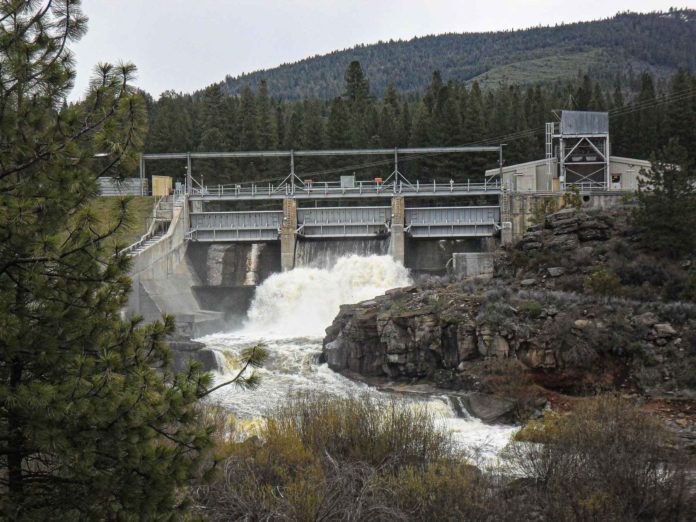More than a century ago, the Klamath River was home to the third largest run of Chinook salmon in the continental United States. These seasonal runs of fish historically numbered in the hundreds of thousands. But today, more than 100 years after the first dam went up on the Klamath, those runs that once seemed inexhaustible are almost gone. Last year, fewer than 700 chinook salmon returned to the Klamath. Just two years prior, dismal returns forced officials to close salmon fishing season entirely. But thanks to an historic agreement signed earlier this week that will allow the largest dam removal project in U.S. history to move forward, there may yet be hope for the Klamath’s imperiled salmon.
The agreement — signed by the states of Oregon and California, the Yurok and Karuk tribes, Warren Buffet-owned PacifiCorp which owns and operates the Klamath River dams, and the Klamath River Renewal Corporation (KRRC) — is designed to resolve concerns over project funding and management raised earlier this year which led to federal regulators handing down a decision that halted the project in its tracks.
Under the new agreement, Oregon and California have agreed to join the KRRC as equal partners in the removal project, as well as committing an additional 45 million dollars to the project’s $450 million budget. If approved by federal regulators, this new agreement would allow pre-dam removal activities to begin as early as 2022, with demolition of all four dams simultaneously scheduled for 2023.
If the project is completed, the removal of the Copco 1, Copco 2, Iron Gate and JC Boyle dams would restore access for Klamath River salmon and steelhead to over 400 stream miles of critical spawning habitat, much of which has been inaccessible for over a century. It would also restore natural river flows, lower river temperatures, increase water quality, and reintroduce vital particulates to sediment-starved downriver habitat.
The dams were constructed solely to generate hydroelectric power, and do not provide flood control, irrigation, or drinking water. In recent years, the dams have also become an economic loser, costing more money to operate than they produce for Buffett’s PacifiCorp.
Representatives of the Yurok and Karuk tribes, which depend on the Klamath’s salmon runs for both subsistence and their cultural identity, were visibly moved during the press conference announcing the new agreement. Yurok tribe Chairman Joe James called it “an emotional day” and said that “The effort to heal the Klamath River is an expression of tribal sovereignty, a fulfillment of Indian rights and a restoration of justice. It benefits our neighbors up and down the West Coast. The effort to heal the Klamath River is who we are. We walk it, we live it, we pray it.”
Conservation groups also lauded the new agreement. Chrysten Lambert, Oregon Director for Trout Unlimited said “Leadership matters. This is happening because Governor Newsom, Governor Brown, and Warren Buffett’s executive team made it happen. After decades of leadership by the tribes and strong support from conservation and fishing groups, the project is moving forward.”
Bob Irvin, president and CEO of American Rivers, said the agreement “keeps this critical river restoration effort on track, which will revitalize salmon runs, restore clean water and river health, and begin to heal decades of harm to the basin’s Indigenous Peoples. It will be the biggest dam removal project the world has ever seen.”
Credit: Source link































